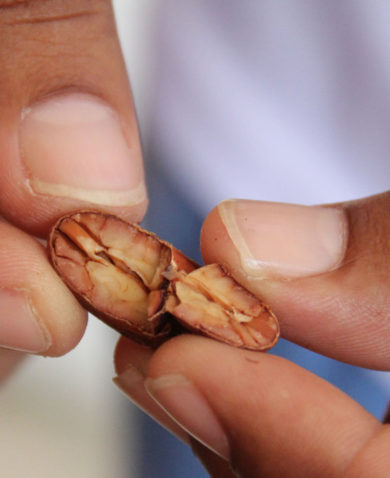
3 Questions with Mert Tangonan: Toward a Cashless Economy in the Philippines
January 18, 2017 | 3 Minute ReadWhat is the cost of operating in cash? Mert Tangonan explains the cons and outlines how electronic payments spur economic growth.
Learn more about how e-payments promote economic growth in a Mert Tangonan’s video interview.
Electronic payments go beyond mobile money, and include electronic funds transfers, credit card transactions, and more. What everyday challenges does the Philippines experience considering that only 2 percent of transactions fall under the umbrella of e-payments?
What many people don’t realize is that operating in cash is costly. There are costs associated with counting, transporting, and securely keeping cash, and making payments in cash is time-consuming. Instead of making a payment on a mobile phone, which takes only a few seconds, it might take a consumer an hour to go to an office, make a payment, and return to his or her place of work. Operating in cash also limits a business’ geographic reach. E-payments, on the other hand, can help businesses expand their market and reach customers who are farther away.
There are other ways that e-payments are linked to economic growth. E-payments increase financial inclusion, by stimulating deposits, for example, or allowing individuals to access credit by providing them with a credit score based on their past digital transactions. Because these kinds of savings and loans form the capital stock through which individuals invest in business, e-payments can also increase commerce and by extension, employment. Especially in an economy like the Philippines, where 26 percent of people are still below the poverty line, this kind of inclusive economic growth is much needed.
The Philippines is made up of over 7,000 islands. Does the country’s dispersed nature create any special incentives and challenges to using e-payments?
There is a unique incentive because in an archipelagic country like the Philippines, transporting cash is a serious logistical challenge. Shifting toward digital payments will reduce those costs, which translates into more investment and commerce on the islands like I mentioned before.
Making that switch to e-payments will require high-touch interactions with citizens across the country to change behavior, as well as financial education. In order to reach the average user, the USAID E-PESO project works with local actors throughout the islands who routinely interact with the local population, like local governments and health care providers. For example, we’ve worked with social workers who can train citizens on e-payments during routine interactions. Once people see how simple it can be to use e-payments, we believe adoption rates will increase.
E-PESO is working to institute the National Retail Payments System (NRPS) to promote e-payments. What are the most fundamental changes that the NRPS would bring?
The biggest change is transforming the financial market infrastructure for retail payments so that it’s safer, more efficient, and inclusive by instituting one automated clearing house (ACH) per payment use case (such as batch electronic funds transfer, real-time credit transfer, debit point-of-sale, ATM, etc.). An ACH is an agreement among participants embodying the clearing rules and processes covering dispute resolution, qualification and disqualification of participants, and more.
This means that under the NRPS, a new and innovative e-payment system wouldn’t have to suffer from a lack of interconnection among users or customers of different financial institutions. On day one, when financial institutions offering a new payment system form an ACH, they would be able to benefit immediately from network effects. This payments system framework encourages innovation by making it easier to start up as a new digital payments provider offering market-driven payment services.
For example, when I was part of the team that launched Globe GCash in the Philippines, one of our main challenges was that customers could only send payments to others on the Globe mobile network, and not to those of other mobile money operators or banks. Globe had a 30 percent mobile network operator market share — a significant constraint in reaching a critical mass of users. Yet when Vodaphone learned about the GCash model and used it to launch the M-PESA mobile payment system in Kenya, Vodaphone’s 70 to 75 percent market share meant that the system was able to reach a critical mass of interconnected users and became a success.
As these e-payments services expand, more Filipinos can have the means to safely store their money, invest their funds, access credit, prepare for life’s shocks, thus improving their quality of life.





























